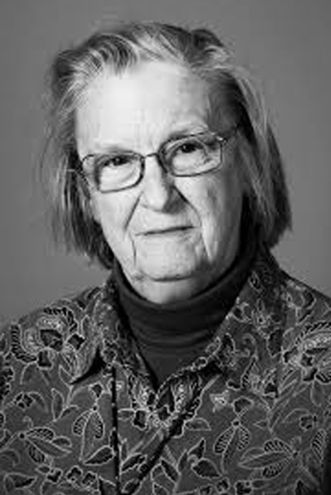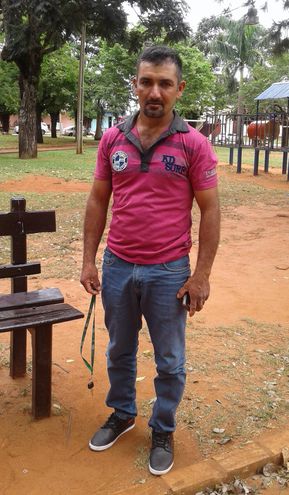The Mbyju’i Communal Land Association: protector of the common good.
by Andrew Nickson
Origin: The association goes back to the old days when, lacking land of their own, small cattle farmers in Santa Rosa occupied state-owned land on the banks of the Tebicuary River to use for pasture.
Misiones: The Mbyju’i Communal Land Association in the department of Misiones is the only example in Paraguay of a communal asset run collectively.
This article was published on Sunday 21 July 2019 in Diario ABC Color. You can read the original here. Translated from Spanish by Mike Gatehouse. All images from ABC Color.
In October 2002, at an academic conference in Guadalajara, Mexico, I was privileged to share a panel with professor Elinor Omstrom (1933–2012) of the University of Indiana, USA. A charming and modest woman from a humble background, she became one of the best-known experts in the area of shared resources or property held in common (commons, as they are termed in English). In particular, she studied how human beings interact in order to maintain in the long term the levels of production of common property such as woodlands, water resources, fishing, irrigation systems and areas of pasture. Her innovative research led her in 2009 to become the first women to be awarded the Nobel Prize for Economics.

Ostrom questioned head on a widely accepted argument, succinctly expressed by Garret Hardin in his book The Tragedy of the Commons (1968). Taking as his example an area of communal pasture land, he argued that, following a ‘rational economic decision’ to pursue their own interest, each member would raise the number of his cattle on the common land, thus contributing to the degradation and exhaustion of the natural resource. Therefore, Hardin concluded that in order to maintain such resources either state intervention would be required, or control by the private sector.
Ostrom, by contrast, studied the ways in which diverse societies have avoided this ‘tragedy of the commons’ by developing alternative institutional forms based on cooperation. She investigated specific examples in which communities had instituted communal practices which allowed the common resources to be preserved and which avoided their degradation. She rejected the idea that common property is always badly administered and reached the conclusion that in many instances the results are better than in the case of private or state-owned land. Based on thousands of studies of common assets she emphasized the importance of sophisticated mechanisms for decision making and norms to resolve internal conflicts, even describing as positive the rules which enable such results to be obtained.
Paraguay has an example of ‘commons’
Paraguay has a classic example of a ‘commons’, a communal farm of 3,600 Ha, successfully run for over a century as a shared property. The origins of the Mbyju’i Communal Land Association (the mbyju’i is a bird similar to a swallow, common in this area) date back to old times when, for lack of land of their own, the small cattle farmers of Santa Rosa took over a large lowland tract, owned by the government, on the banks of the Tebicuary river, in order to pasture their animals. The land includes a strip about 12 km long, beside the river, which marks the frontier between the departments of Misiones and Caazapá, and borders on the estate of the Plate family, heirs of a great land-owner of the Liberal period.
In the final, fraudulent elections of the dictatorship, in November 1988, which Stroessner won with 88.6 per cent of the vote, a deputy from Santa Rosa was ‘elected’, called Acidio ‘Yoyito’ Aquino Balbuena. He immediately gave orders for the communal land to be fenced off in a vain attempt to get his hands on the enormous property. But, to his chagrin, the dictatorship fell a few months later. The response of the small farmers belonging to the association was decisive. In a matter of days they ripped out all the wire fencing. Thanks to the firm resistance they offered, their organization emerged stronger. It was transformed into a legally registered body and secured permission to farm and keep the income from the 3,600 Ha of state-owned land.

Today the association has 130 members of which 70 are active. All are small cattle farmers who have no pasture land of their own. The registration fee of the association costs Ꞡ500,000 (PYG – guaraní). In the first year new members are charged Ꞡ15,000 per head, and in subsequent years only Ꞡ2,000. The majority of members live in compañías (hamlets) of Santa Rosa, such as San José and San Rafael. According to present estimates, there are 2,500 head of cattle on the communal land, each with its identity mark. Association members meet on the land Sunday of each month. They elect their leadership in rotation for a two year term. The current president is Modesto Rodas, and the vice-president is Darío Martínez.
Membership of the association is hard work. No one lives permanently on the communal land, and access is difficult. From Paraje Santa there is a 6 km road to the entrance gate of the land, and from there a further 6 km to the river. The communal land is 30 km from Santa Rosa. Members take five hours on horseback to reach it from Santa Rosa, and nine to ten hours when they are driving cattle. For the pregnant cows to give birth they have to be brought from the communal land to Santa Rosa. Community members look after the animals and take it in turns to guard them against rustlers, three or four people at a time working shifts of several days.
Towards the end of 2018, with a grant of Ꞡ17 million from the Misiones departmental government, the association bought a launch to patrol the river against rustlers, who come from as far away as the Villa Florida area to steal the animals.

Hard labour
When there is heavy rain and flooding, they have to evacuate the cattle from the communal land along muddy paths, leaving the fenced fields, corral and huts under water. Recently the association discovered that one of the heirs of the Cálcena family, large land-owners in the area, had put on the market 300 Ha of high-ground next to the communal land. They are very anxious to buy this land so that they can keep the cattle there during the flood reason, instead of having to drive the herd such long distances as has been necessary for many years.
The Mbyju’i Communal Land Association is a unique example in Paraguay of a common property administered collectively. Although there are communal lands in a number of farm settlements in the country, none is as old or developed. This is a living example of what Ostrom advocated as an excellent institutional form for managing natural resources. Neither private nor state-owned, it is a proof that, when you can protect an enterprise against the greed of privatization and the venality and clientelism of local politicians, a community of the users themselves is capable of managing, exploiting and ensuring the sustainability of natural resources, in a collective fashion and for the benefit of all.

